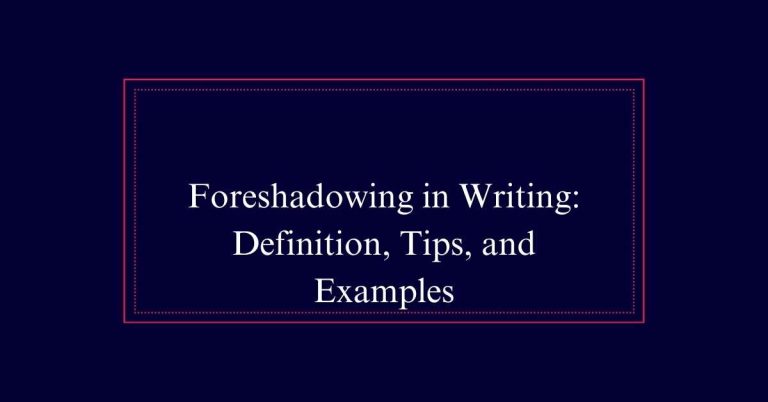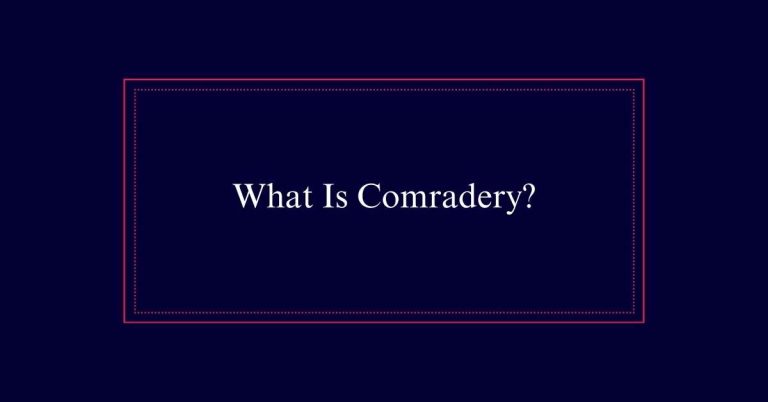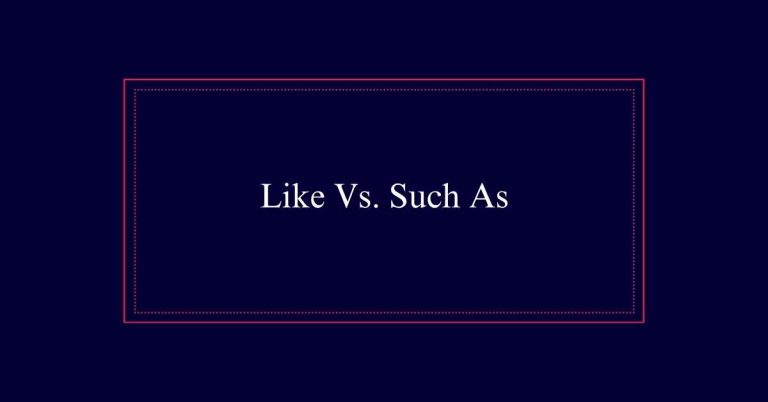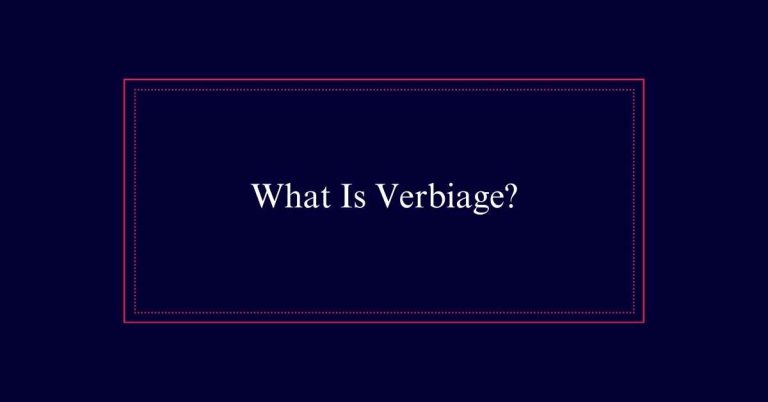Bad Faith Argument Vs. Good Faith Argument
A bad faith argument is intentionally deceptive and manipulative. It aims to mislead, derail discussions, and often uses logical fallacies like ad hominem attacks or straw man claims. This erodes trust and hinders productive dialogue. In contrast, a good faith argument is honest and respectful. It presents evidence truthfully, respects opposing views, and seeks mutual understanding.
Good faith arguments strengthen relationships and promote fairness. For example, Iago in *Othello* typifies bad faith, while Atticus Finch in *To Kill a Mockingbird* exemplifies good faith.
Defining Bad Faith Arguments
Bad faith arguments are intentionally deceptive and are not based on genuine beliefs. These arguments aim to mislead or manipulate rather than to engage in honest dialogue. They are often associated with unethical positions and involve the use of logical fallacies.
In negotiations, bad faith arguments tend to favor one party unfairly. Common tactics include ad hominem attacks, where the opponent is personally attacked, and straw man claims, where the opponent’s position is misrepresented. The goal is usually to undermine the opponent, derail the discussion, or make the opponent appear ridiculous.
Characteristics of Bad Faith
Characteristics of bad faith arguments often include intentional deception and the use of logical fallacies. Such arguments frequently ignore evidence and misrepresent facts to manipulate the discussion. They aim to undermine the opponent’s credibility rather than engage with the actual issues.
Bad faith arguments also often shift topics abruptly to derail the conversation. This tactic forces opponents to defend against irrelevant points, wasting time and effort. Additionally, these arguments may rely on emotional appeals rather than logical reasoning, exploiting biases and prejudices.
Examples of Bad Faith Tactics
In the domain of discourse, several tactics reveal the nature of bad faith arguments. These tactics are designed to mislead and manipulate rather than foster honest discussion. Common examples include ad hominem attacks, where the arguer targets the opponent personally rather than addressing the argument itself, and straw man claims, which involve misrepresenting the opponent’s position to make it easier to attack. Other tactics include derailing the discussion to avoid addressing the main point and using false equivalencies to equate unrelated issues. Such tactics undermine trust and hinder productive dialogue.
| Bad Faith Tactic | Description |
|---|---|
| Ad Hominem | Personal attacks on the opponent |
| Straw Man | Misrepresenting the opponent’s view |
| Derailing | Shifting the topic to avoid the issue |
| False Equivalence | Equating unrelated issues |
Defining Good Faith Arguments
While bad faith tactics aim to manipulate and mislead, good faith arguments prioritize honesty and mutual respect. These arguments are built on sincerity and a genuine desire to understand different viewpoints.
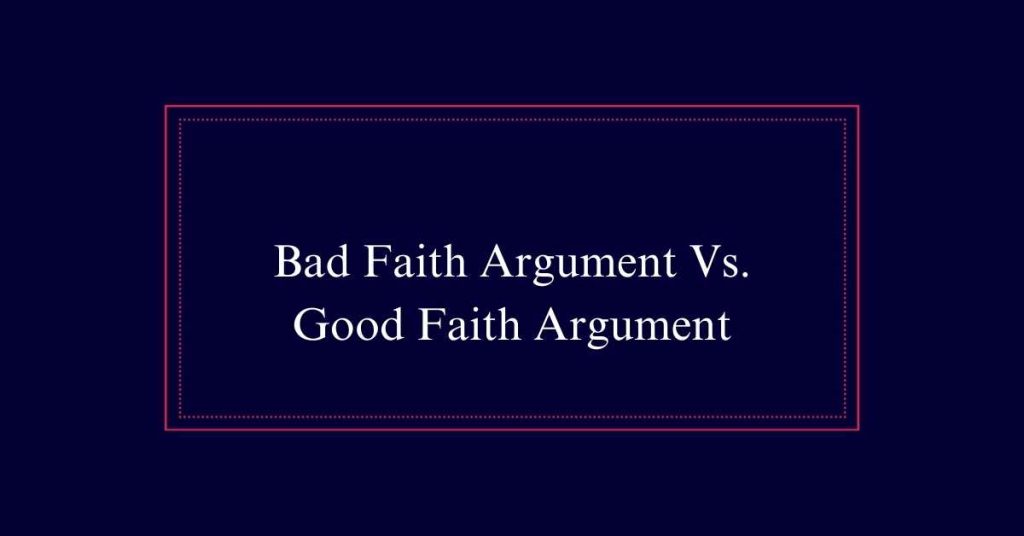
Good faith arguers engage with their counterparts thoughtfully and listen actively. Their goal is not to win at any cost but to foster constructive dialogue. They rely on facts and evidence, avoiding misrepresentation.
In good faith discussions, all participants feel heard and valued. This approach encourages collaboration and helps build trust. By focusing on mutual understanding, good faith arguments can lead to more productive and meaningful exchanges.
Characteristics of Good Faith
Good faith arguments prioritize honesty, mutual respect, and a sincere desire to understand different viewpoints. They are marked by a commitment to truth and fairness, where participants genuinely engage with each other’s ideas. These arguments are conducted with integrity, considering all evidence and perspectives. The goal is to foster constructive dialogue and build mutual understanding.
Here are key characteristics of good faith arguments:
| Characteristic | Description | Importance |
|---|---|---|
| Honesty | Truthful representation of facts | Builds trust and credibility |
| Respect | Valuing others’ opinions | Encourages open dialogue |
| Sincerity | Genuine engagement | Promotes mutual understanding |
| Fairness | Equal consideration of views | Ensures balanced discussion |
| Constructiveness | Focus on problem-solving | Facilitates progress |
Goals Behind Arguments
Understanding the goals behind arguments is essential for evaluating their intent and effectiveness.
In bad faith arguments, the primary goals are to undermine opponents, derail discussions, and win debates through manipulation. These arguments seek to make opponents look foolish, bait them into unrealistic positions, and force debates on the arguer’s terms.
Conversely, good faith arguments aim to educate opponents and foster mutual understanding. They encourage honest and respectful dialogue, allowing for potential changes in position and promoting respectful disagreement. The intent is to create a space where both parties can learn and grow from the discussion.
Impact on Discussions
Evaluating the impact of arguments on discussions reveals how they shape interactions and outcomes. Bad faith arguments erode trust and credibility, making productive dialogue difficult. They introduce conflict and division, often derailing discussions and distracting from the main issues. This can lead to the spread of misinformation and hinder problem-solving efforts.
Conversely, good faith arguments foster collaboration and mutual respect. They encourage critical thinking and facilitate constructive problem-solving. Such arguments strengthen relationships and promote mutual understanding. The contrast between these two types of arguments highlights the importance of intent and integrity in discussions.
Identifying Bad Faith Arguments
Recognizing bad faith arguments is essential for maintaining productive and respectful discussions. These arguments often contain logical fallacies, such as ad hominem attacks or straw man claims.
Look for signs of intentional deception, like ignoring evidence or misrepresenting facts. Assess the consistency of the argument and examine the motives behind it. Bad faith arguments aim to manipulate or derail the conversation.
They distract from the main issues and create conflict. Pay attention to the tone and language used, as hostile or dismissive language can indicate bad faith. Evaluating sources and evidence is also vital. Identifying these tactics helps maintain the integrity of discussions and promotes a more honest dialogue.
Benefits of Good Faith
Engaging in good faith arguments fosters constructive dialogue and mutual respect. This approach encourages open-mindedness and a genuine exchange of ideas. Participants are more likely to listen, understand different perspectives, and work towards common ground. Good faith arguments promote collaboration, leading to more productive and meaningful discussions. Additionally, they build trust and respect among individuals, which can strengthen relationships and create a more positive environment for future interactions.
| Benefit | Description | Outcome |
|---|---|---|
| Constructive Dialogue | Promotes open and honest communication | Enhanced mutual understanding |
| Mutual Respect | Encourages respect for different viewpoints | Strengthened relationships |
| Problem-Solving | Facilitates collaborative solutions | Effective conflict resolution |
Literature Examples
Classic literature provides numerous examples of both bad faith and good faith arguments, illustrating their impact on characters and storylines. In Shakespeare’s *Othello*, Iago’s deceptions epitomize bad faith arguments. He manipulates Othello through lies and insinuations, leading to tragedy. Iago’s intentions are malicious, aiming to destroy relationships and trust.
Conversely, in Harper Lee’s *To Kill a Mockingbird*, Atticus Finch embodies good faith arguments. During the trial, he presents evidence honestly, respects opposing counsel, and seeks justice. His approach fosters understanding and highlights the importance of integrity.
These examples show how bad faith arguments can lead to conflict and harm, while good faith arguments promote fairness and understanding, shaping the narrative and moral lessons of the stories.


